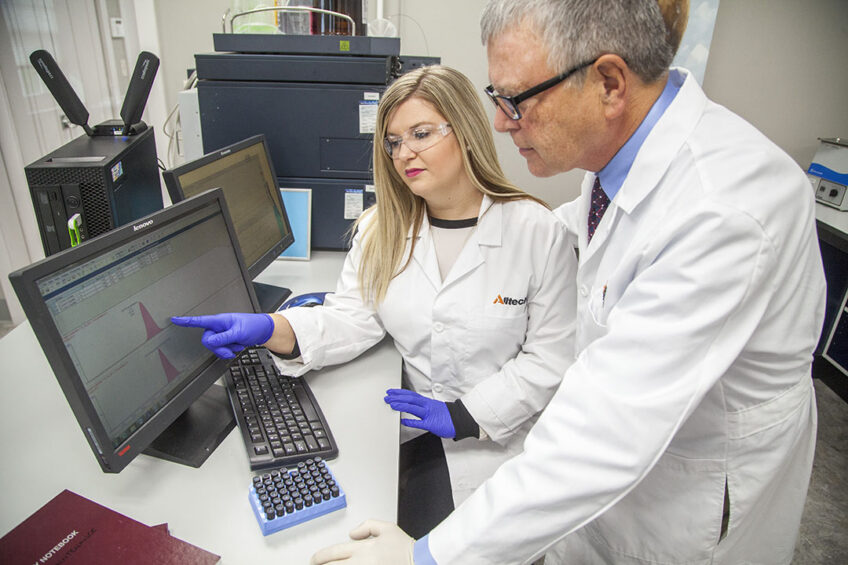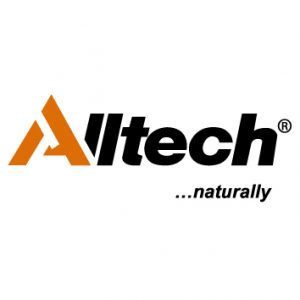Emerging mycotoxins: A challenge?

Although emerging mycotoxins are less known and more difficult to detect, producers must continue to be vigilant, as these toxins have just as much potential to impact animal health and performance.
Advances in research technologies and the growing interest in mycotoxins have led to the discovery of new toxic fungal metabolites that are often referred to as ‘emerging mycotoxins’. Although evidence of these mycotoxins continues to be explored by the scientific community, they are currently defined as ‘mycotoxins that are neither routinely determined nor legislatively regulated’. These compounds are not the same as ‘modified’ or ‘masked’ mycotoxins, which are derivatives of common, regulated mycotoxins but which are undetectable by common analytical methods due to their modified structure. Although these mycotoxins are more difficult to detect than the more well-known types, producers must continue to be vigilant, as emerging or modified mycotoxins have just as much potential to wreak havoc on natural immunity, agri-food sustainability and the overall profitability of animal production.
How do emerging mycotoxins impact animals?
While the number of studies exploring emerging mycotoxins in animal feedstuffs has increased, there is still a notable lack of in vivo studies measuring how this group of toxins impacts animal health and performance compared with traditional mycotoxins. However, as with most mycotoxins, emerging mycotoxins are believed to have negative effects on gut health and immunity, with some having an additional impact on the internal organs and reproductive health of the animals that ingest them.
Alternariol (AOH) and tenuazonic acid (TeA)
Alternaria mycotoxins, such as AOH and TeA, may have cytotoxic, carcinogenic and genotoxic effects, much like many other mycotoxins. Research suggests that AOH can act as an endocrine disruptor, altering estradiol and progesterone synthesis and secretion in animals. It is also shown to have synergistic properties with zearalenone that can alter reproductive performance. Initial research with TeA has shown that this mycotoxin may create intestinal challenges, such as vomiting, diarrhoea and haemorrhages in monogastric animals. Global regulatory limits have not been established for Alternaria mycotoxins due to a lack of in vivo research, but the European Food Safety Authority (EFSA) has suggested that health risks due to this family of mycotoxins cannot be excluded.
Aurofusarin
Aurofusarin is produced by Fusarium moulds and, although it is considered an emerging mycotoxin, it was originally described in 1937 as a fungal pigment. More recently, research has shown that aurofusarin has a strong impact on the immunity, oxidative stress, fertility and egg quality of poultry. In particular, aurofusarin can impact the fatty-acid composition of the egg yolk, interfere with vitamin E accumulation in the egg yolk and delivery to developing embryos, and result in changes in the colour of the egg yolk.
Beauvericin (BEA)
Beauvericin (BEA) possesses insecticidal, antimicrobial and antibiotic activities. It is also an enzyme disruptor and can induce oxidative stress. Although in vitro studies have found BEA to be toxic to both rodents and poultry, the same results have not always been observed in an in vivo setting. Interestingly, there is some speculation that BEA may have some positive effect by inhibiting some pathogens, such as C. perfringens. Whether this benefit outweighs the negative effects of this mycotoxin on overall animal health and performance is an issue for debate and there is a clear need for further in vivo studies. So far, the EFSA has drawn no conclusions about chronic exposure to BEA due to a lack of relevant in vivo toxicity data.
Enniatins A/A1 and B/B1 (ENNs)
Enniatins are known to have antibacterial, cytotoxic and oxidative properties. Cell models investigating the effects of ENNs on the intestinal epithelium have shown that these mycotoxins have the ability to disturb the microbial equilibrium. This could lead to health repercussions downstream. Additionally, the toxicity of ENNs on intestinal epithelial cells has been shown to be similar or slightly higher than that of DON. In vitro rumen models show that, depending on the rumen conditions, some ENNs can pass through the rumen without being modified and thus reach the intestine. When consumed by pigs, ENNs continue to have a significant impact on intestinal microbiota as well as liver health. Furthermore, ENNs may exacerbate the negative responses in pigs consuming DON compared to pigs that have consumed DON or ENNs on their own.
Fusaric acid (FA)
Fusaric acid (FA) can be produced by many different Fusarium moulds and over a wide range of temperatures and moisture values. Fusaric acid competes with the amino acid tryptophan at binding sites, which leads to an increase in free tryptophan in the blood. This elevated free tryptophan can enter the brain, increasing serotonin production. Fusaric acid also plays a role in lowering blood pressure. Together, these effects can lead to reduced feed intake, vomiting, lethargy and swelling of the legs or mammary glands. These symptoms are often not observed until higher levels are FA are present in the feedstuffs/feeds. This mycotoxin has also been shown to alter rumen microbial populations. Furthermore, when combined with other mycotoxins, such as DON and fumonisins, FA is shown to have synergistic properties. As a result, the toxicity symptoms of these other mycotoxins may be observed more readily or may be more severe when FA is present. Pigs may be more susceptible to this mycotoxin than other species.
Moniliformin (MON)
Poultry have been found to be most susceptible to the impacts of moniliformin (MON), but across all animals, the heart is the organ that exhibits the most damage due to this toxin, with myocardial lesions being observed. Other conditions frequently noted in animals exposed to MON include muscular weakness, respiratory distress, reduced feed intake and bodyweight gains, and impaired immune function.
How prevalent are emerging mycotoxins?
Although they are less well known, emerging mycotoxins are some of the most frequently detected mycotoxins in ingredients and complete rations worldwide. As assessed by the Alltech 37+ mycotoxin testing laboratories, emerging mycotoxins were detected in 96.5% of all 5,992 samples analysed globally in 2022.
Even though the occurrence rates for emerging mycotoxins are high, their concentrations often remain low. For instance, with FA, the average concentration was 202 ppb, with a maximum of 8,717 ppb detected. Similarly, ENN A/A1 was found at an average of 13 ppb and a maximum of 1,300 ppb. As a result, acute consumption of these mycotoxins by animals may be rare, while chronic intake is more likely.
Closing the knowledge gap
While emerging mycotoxins are not yet detectable with simplified mycotoxin testing, such as rapid test kits or ELISA, there are more advanced laboratory methods — such as UPLC-MA/MA — that allow for the assessment of the type and concentration of many emerging mycotoxins. Despite the notable gaps that exist in the industry’s understanding of emerging mycotoxins, these advancements in detection methods and further research should, in the future, lead to a deeper understanding of how these toxins manifest themselves, the impact they have on animals and potential solutions to address the challenges they present.
References available on request.











